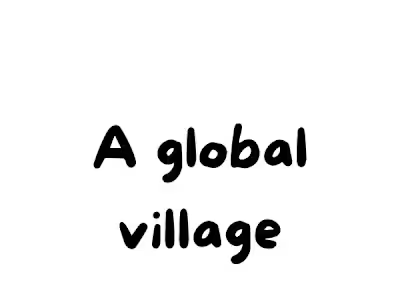The Evolving Tapestry: The Condition of English in the present
The English language, a vibrant tapestry woven from centuries of conquest, trade, and cultural exchange, finds itself at a fascinating crossroads. Once confined to the shores of a small island nation, it now reigns as the world's lingua franca, a language of global communication. However, this very dominance has sparked debate about the condition of English: is it stagnating, fracturing, or simply evolving in a dynamic world?
One undeniable aspect of English's condition is its continuous evolution. Unlike fossilized languages, English thrives on borrowing and adaptation. The rise of the internet has accelerated this process, with new words and acronyms emerging daily to keep pace with technological advancements ("selfie," "hashtag"). This dynamism can be seen as a strength, allowing English to express the complexities of our interconnected world.
However, this rapid change raises concerns about standardization. The global reach of English has led to the emergence of regional dialects, with distinct vocabularies and accents. American English, British English, and Indian English, for instance, all have their own quirks and nuances. While this diversity enriches the language, it can also create communication barriers.
Furthermore, the dominance of English raises anxieties about linguistic homogenization. Languages, like cultures, are repositories of unique traditions and worldviews. As English becomes ubiquitous, there is a fear that other languages, particularly those of minority groups, will be marginalized.
The condition of English is also marked by a growing informality. The rise of social media and instant messaging has blurred the lines between formal and informal communication. Abbreviations, emojis, and slang have become commonplace, even in professional settings. While this informality can enhance communication speed and efficiency, it can also lead to a decline in grammatical accuracy and a potential devaluation of formal writing.
Despite these challenges, the future of English appears bright. Its adaptability and global reach make it a powerful tool for fostering cross-cultural understanding. Educational initiatives promoting literacy and language acquisition can help bridge the gap between standardized English and regional dialects. Additionally, the rise of machine translation can mitigate communication barriers caused by linguistic differences.
In conclusion, the condition of English reflects the dynamic nature of language itself. It is a language in flux, adapting to the ever-changing world around it. While concerns about standardization and homogenization are valid, the potential benefits of a global language for communication and understanding outweigh them. The future of English is not one of stagnation, but of continued evolution, requiring us to embrace its diversity while advocating for responsible use and education. The story of English is far from over, and its next chapter will be as fascinating and unpredictable as the one that brought it to its current state.
Like this project
Posted May 21, 2024
A study on the evolution of english
Likes
0
Views
2
Tags



